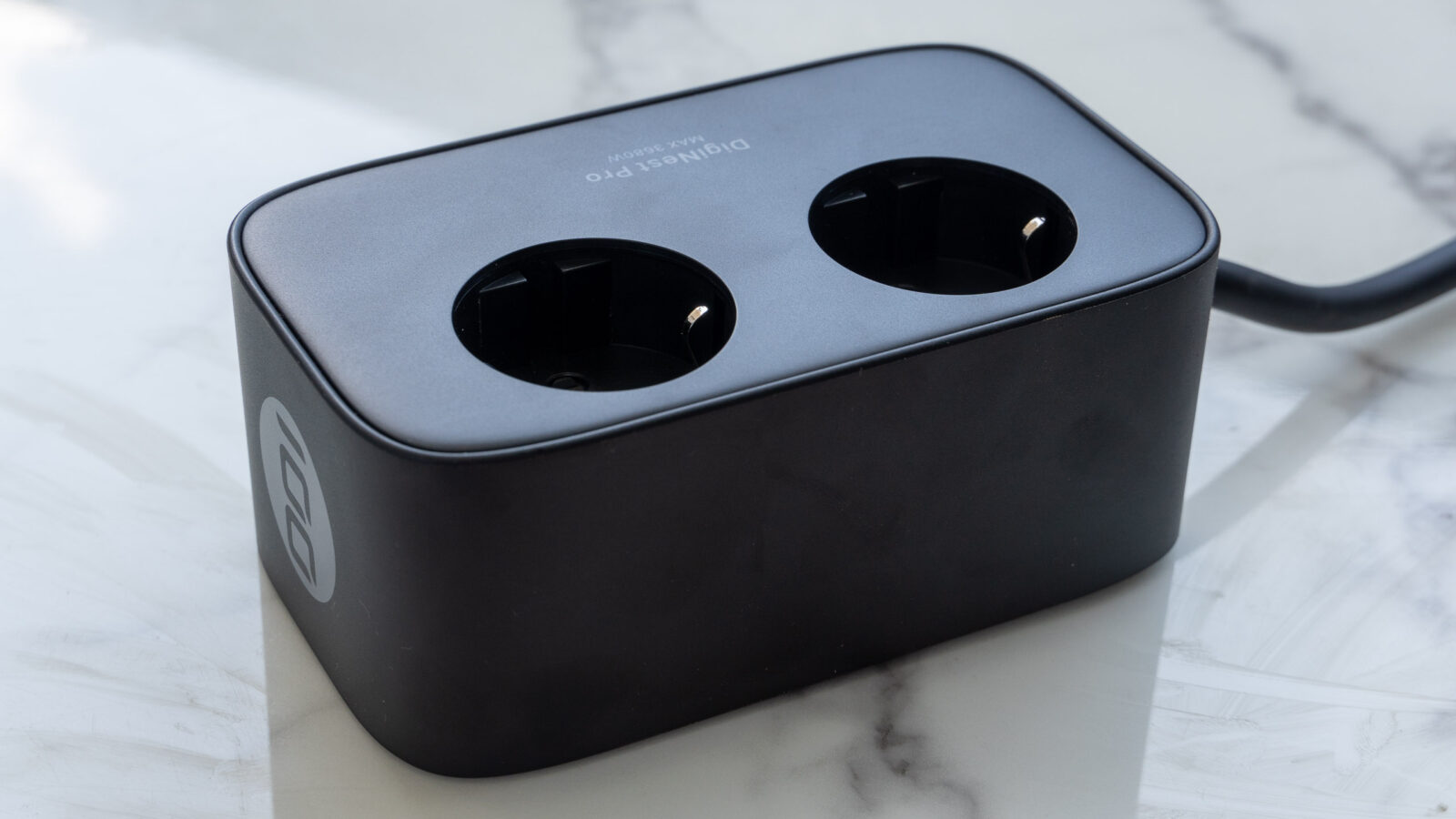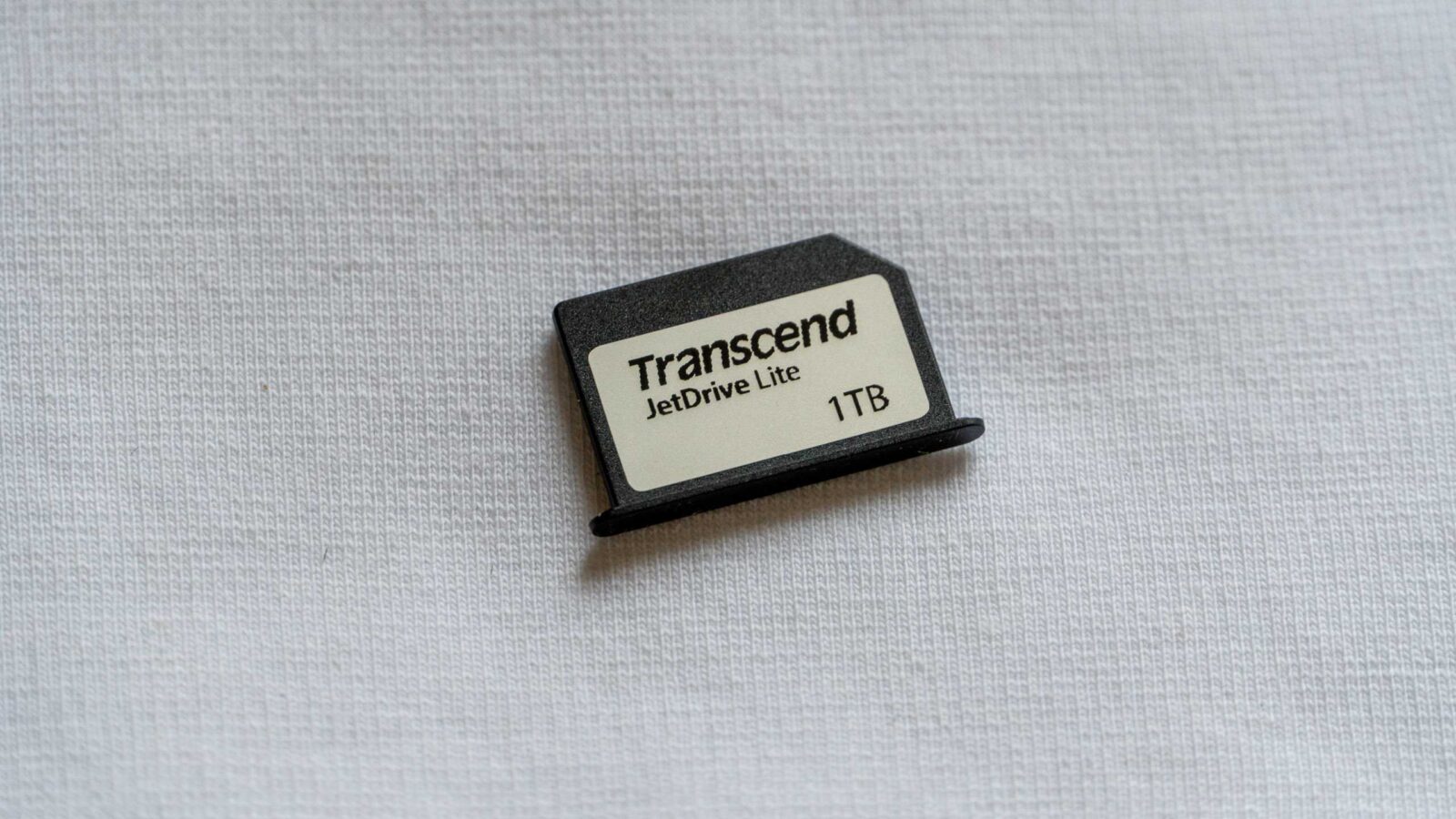Raising the degree of comfort: Ugreen Tablet Stand Holder and 360° Rotating Laptop Stand review
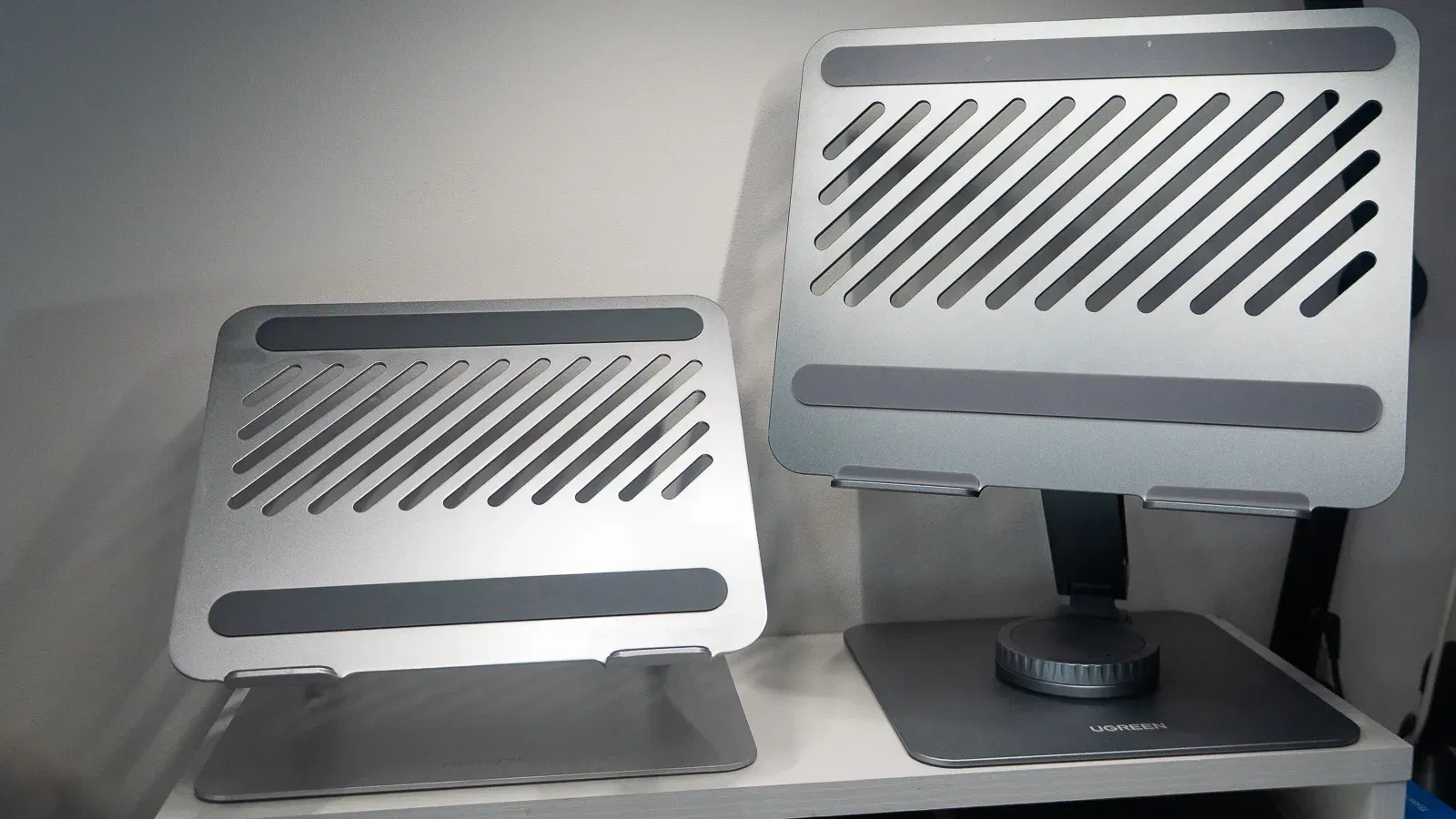
Modern desktop is increasingly becoming a battlefield of gadgets: laptops, tablets, smartphones are constantly assaulting space, and your spine is voluntarily capitulating to a suboptimal angle of inclination. At some point I got tired of waking up with a sore neck and back, and I realized that it was time to arm myself with a pair of stands for laptop and tablet. I found the right ones in the Ugreen range. One for the tablet and one for the laptop. For the tablet with the ability to rotate, for the laptop is fixed. Anyway, now I’ll tell you in detail about the design, materials and how my life has changed.
key features
- Materials: aircraft aluminum, silicone pads, rubber feet
- Device range: from smartphones 4″ to tablets 13″ to laptops up to 17″
- Angle adjustment: 10-80° (Tablet Stand), 3 fixed heights + free 360° rotation (Rotating Stand)
- Folded dimensions: ~16×10×2 cm (Tablet Stand), Ø18×2.5 cm (Rotating Stand)
- Weight: ~500 g (Tablet Stand), ~1.14 kg (Rotating Stand)
- Additional: perforations for heat dissipation, foldable design, easy assembly without tools
Ugreen Stand design and materials
Generally, Ugreen has a lot of different stands, and it’s everyone’s choice here. My concept was that I always have the laptop as my main device in front of me, but the iPad as a second display, and it needs to be slightly angled since it’s on the side. But you may have a different configuration, I’ll just tell you about the company’s general approach to these stands, and you’ll have to decide for yourself about specific models. The thing is, I have my tablet on a laptop stand and my laptop on a tablet stand.
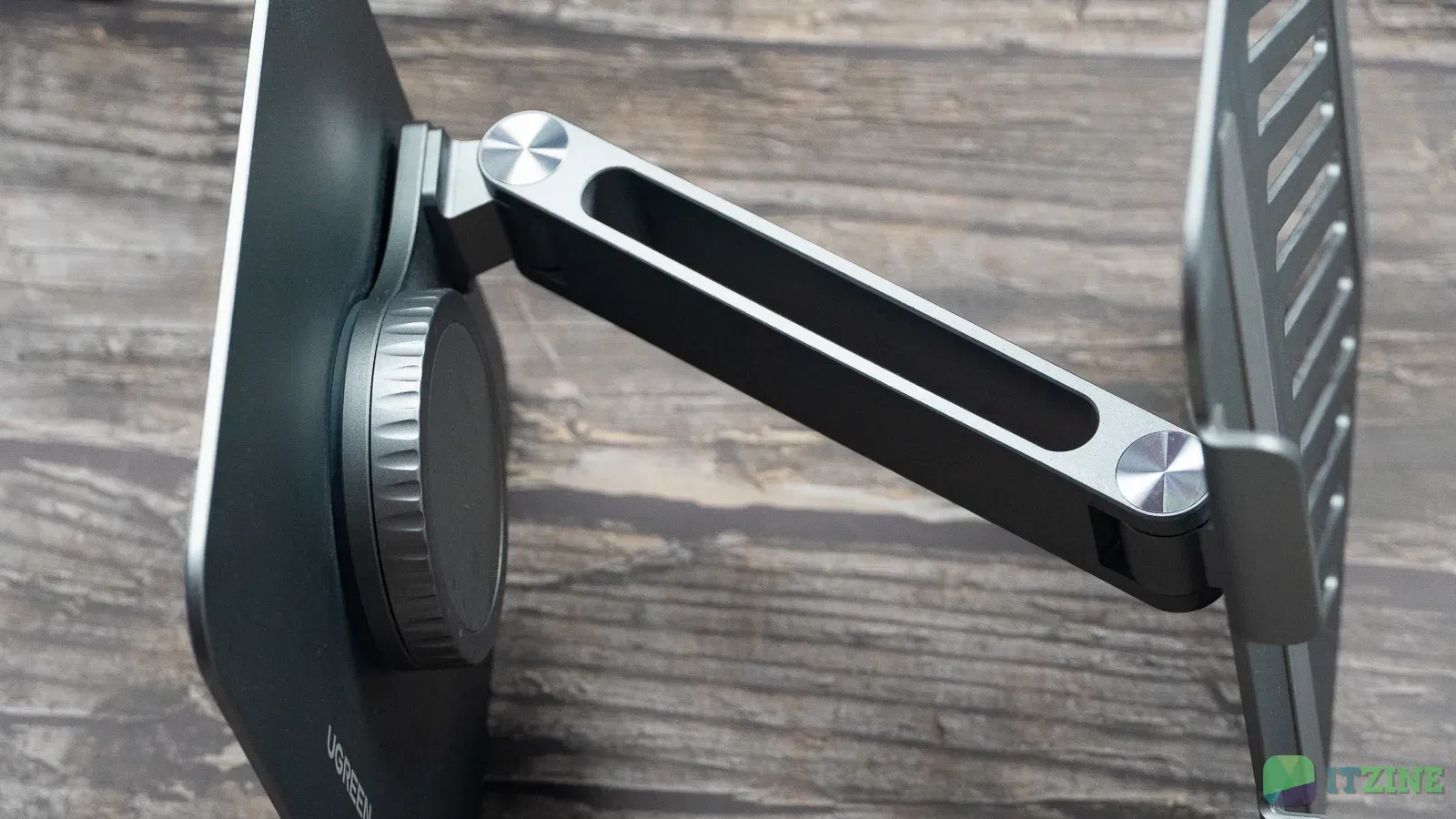
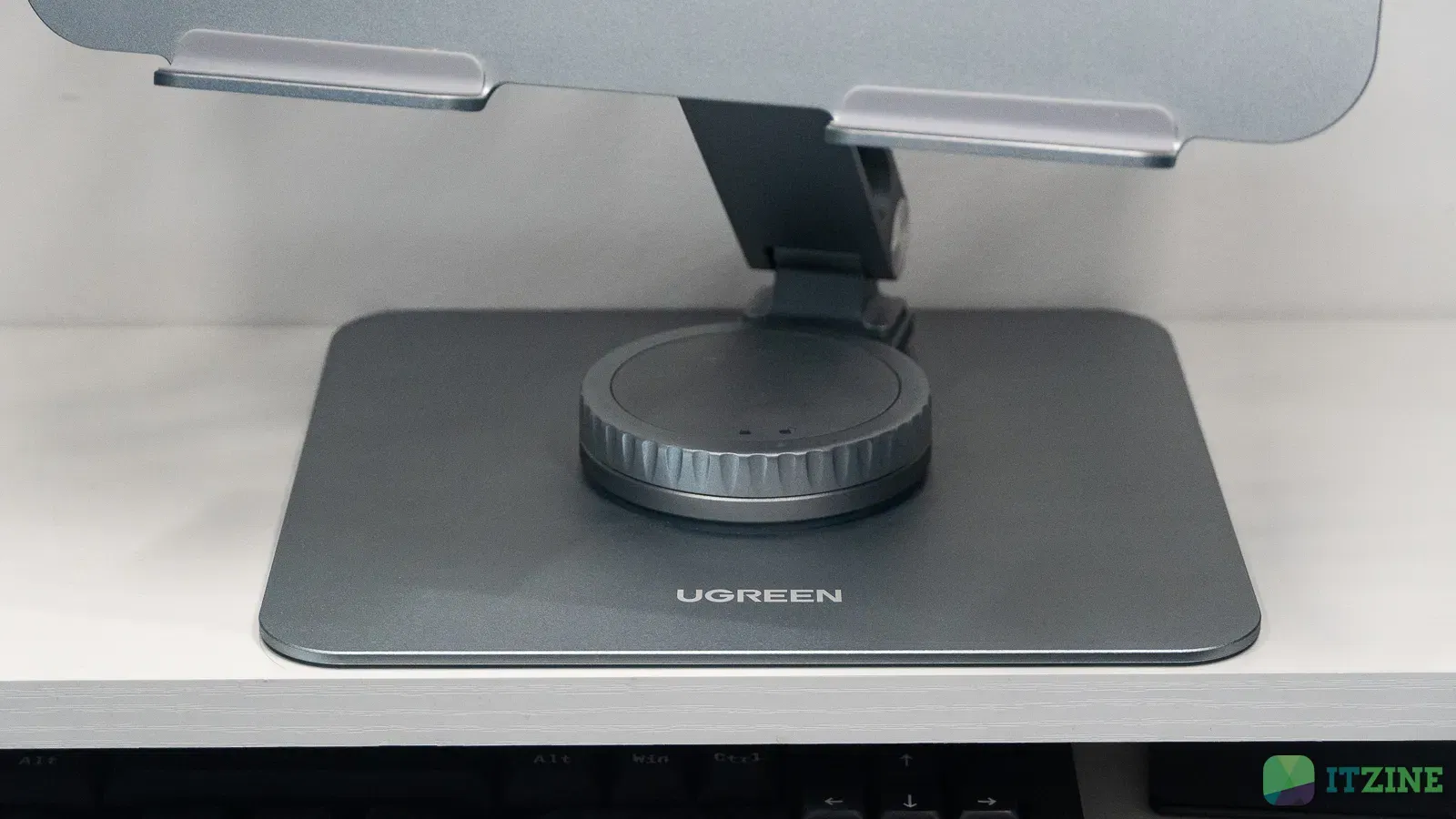
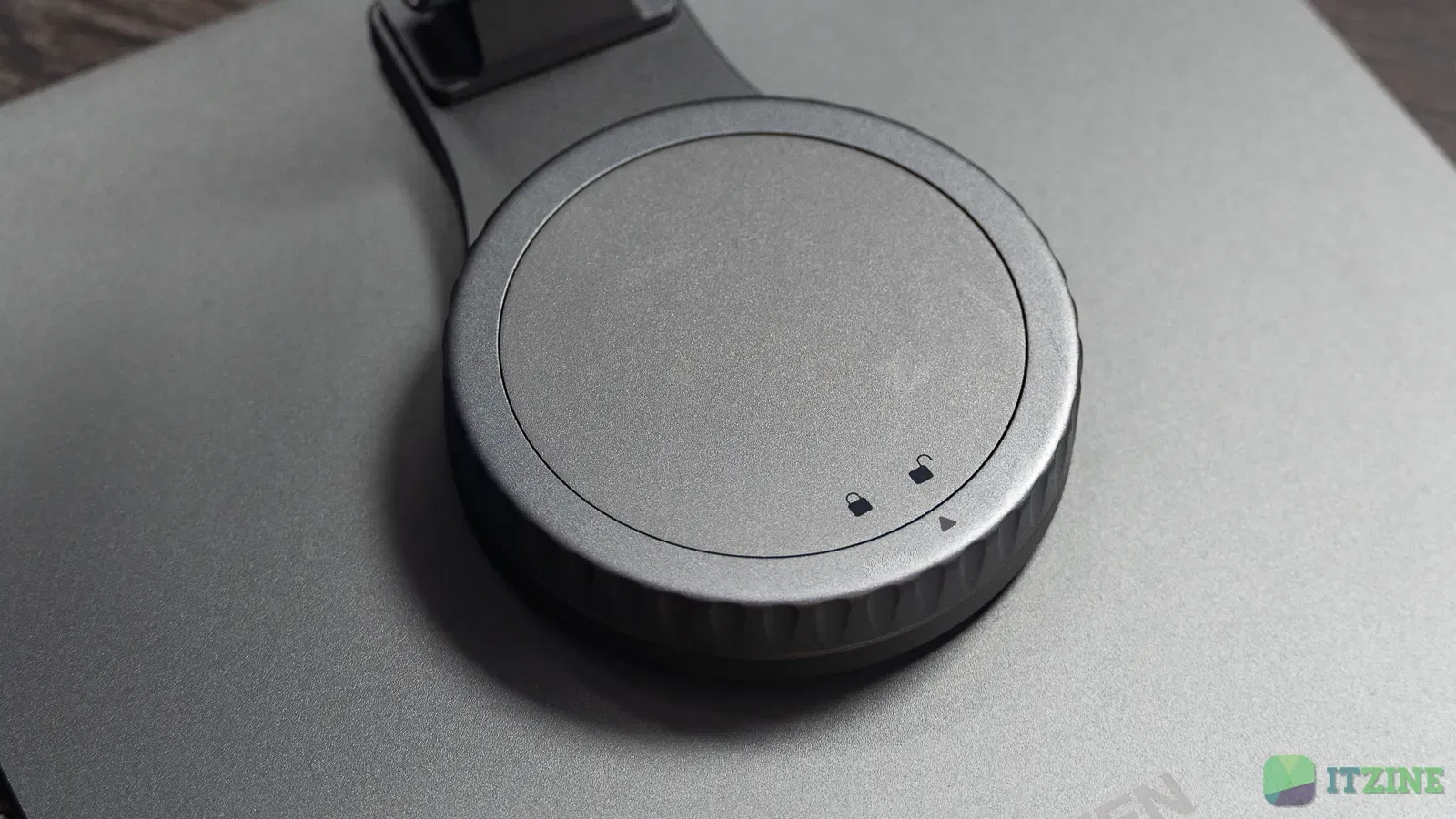
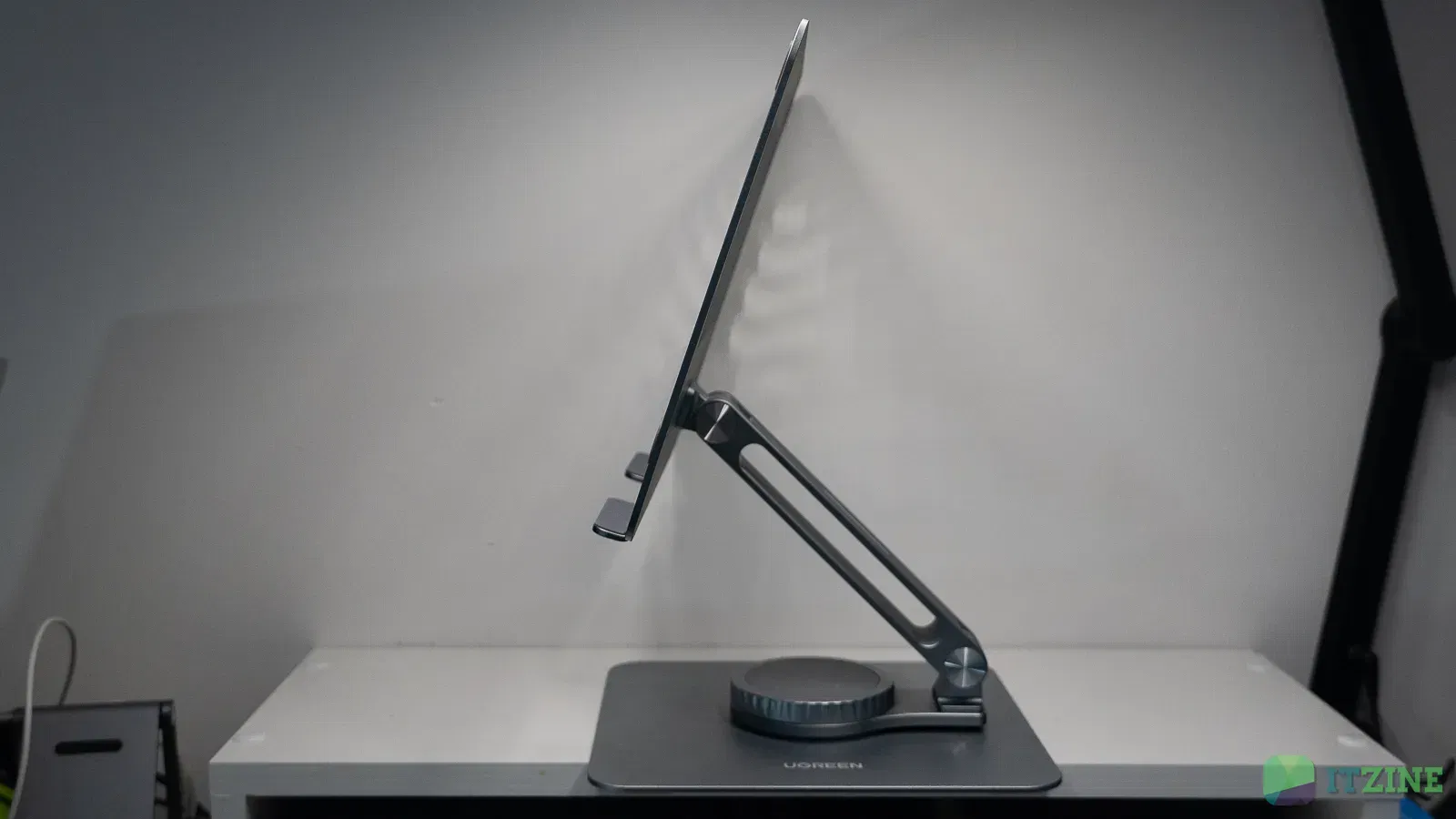
At first glance, the design is minimalist: brushed gray aluminum with no flashy inserts or intrusive logos. The design of the Tablet Stand Holder is strictly laconic: matte gray aluminum with no shiny elements and no intrusive logos for an understated and solid look. Tablet Stand Holder looks like two parallel beams connected by a perforated backrest, and Rotating Laptop Stand Holder looks like a neat disk with a thin platform and almost imperceptible hinge. This combination of simple geometric shapes immediately sets a technological vibe and doesn’t distract from your work.
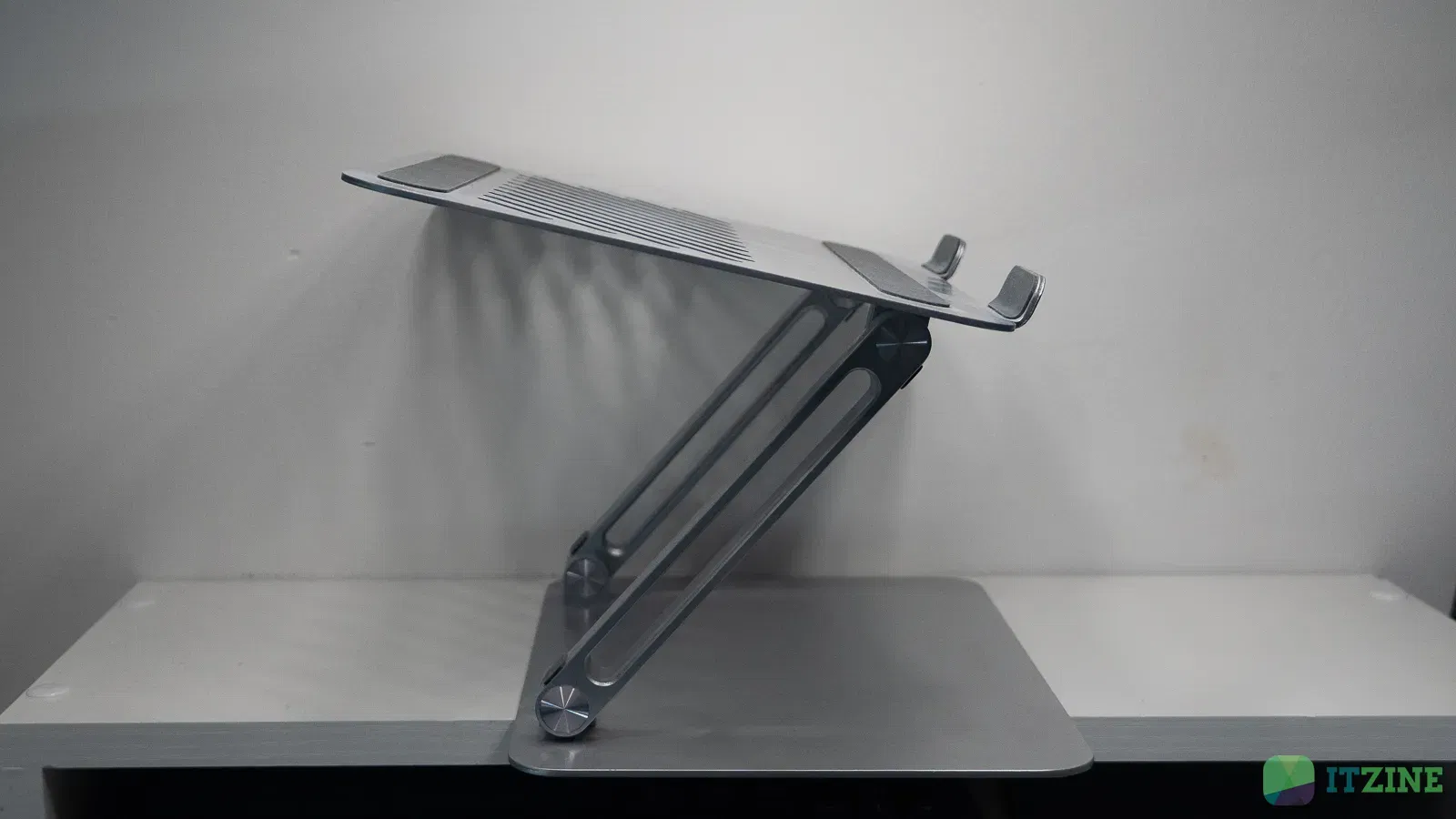
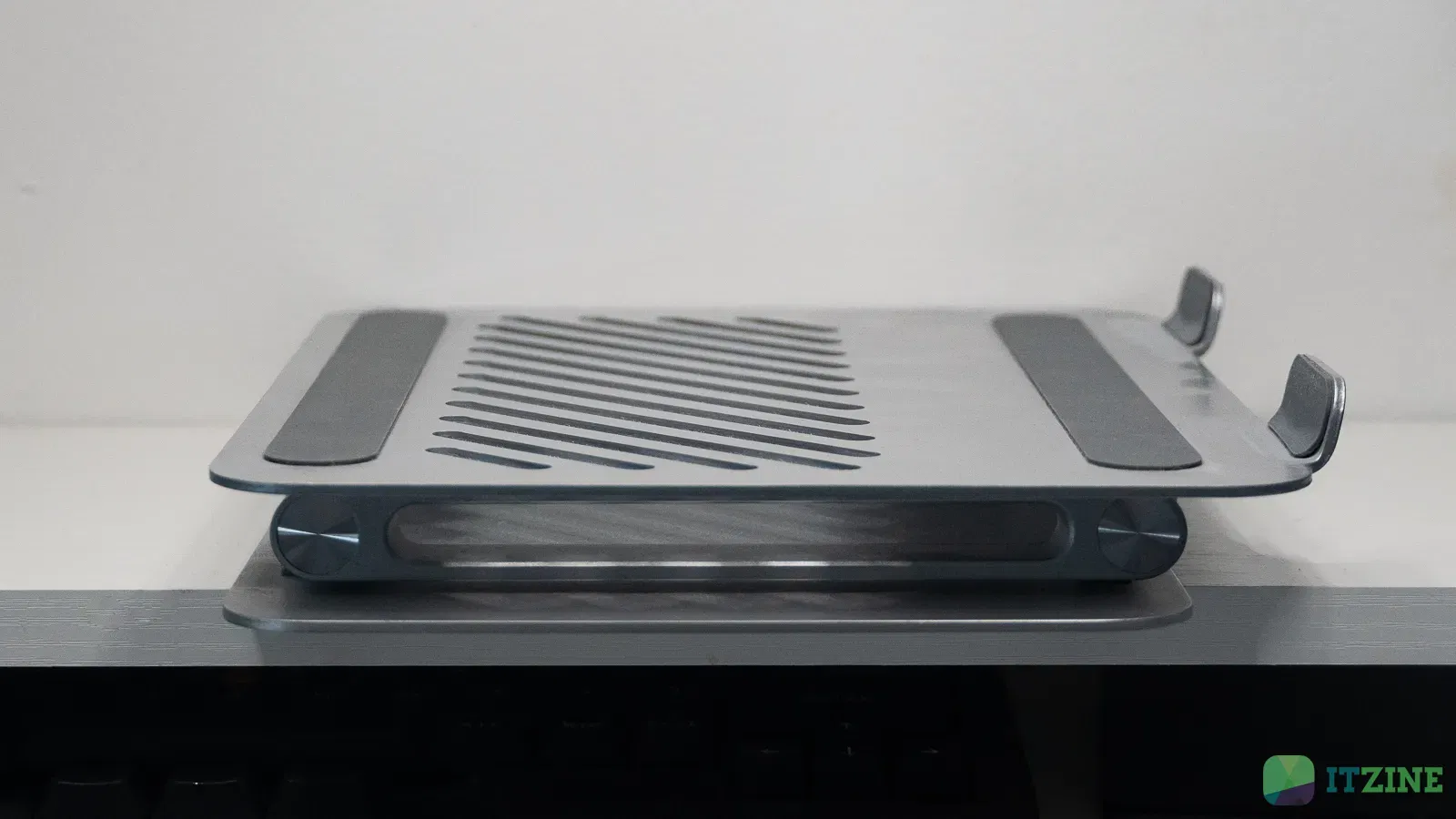
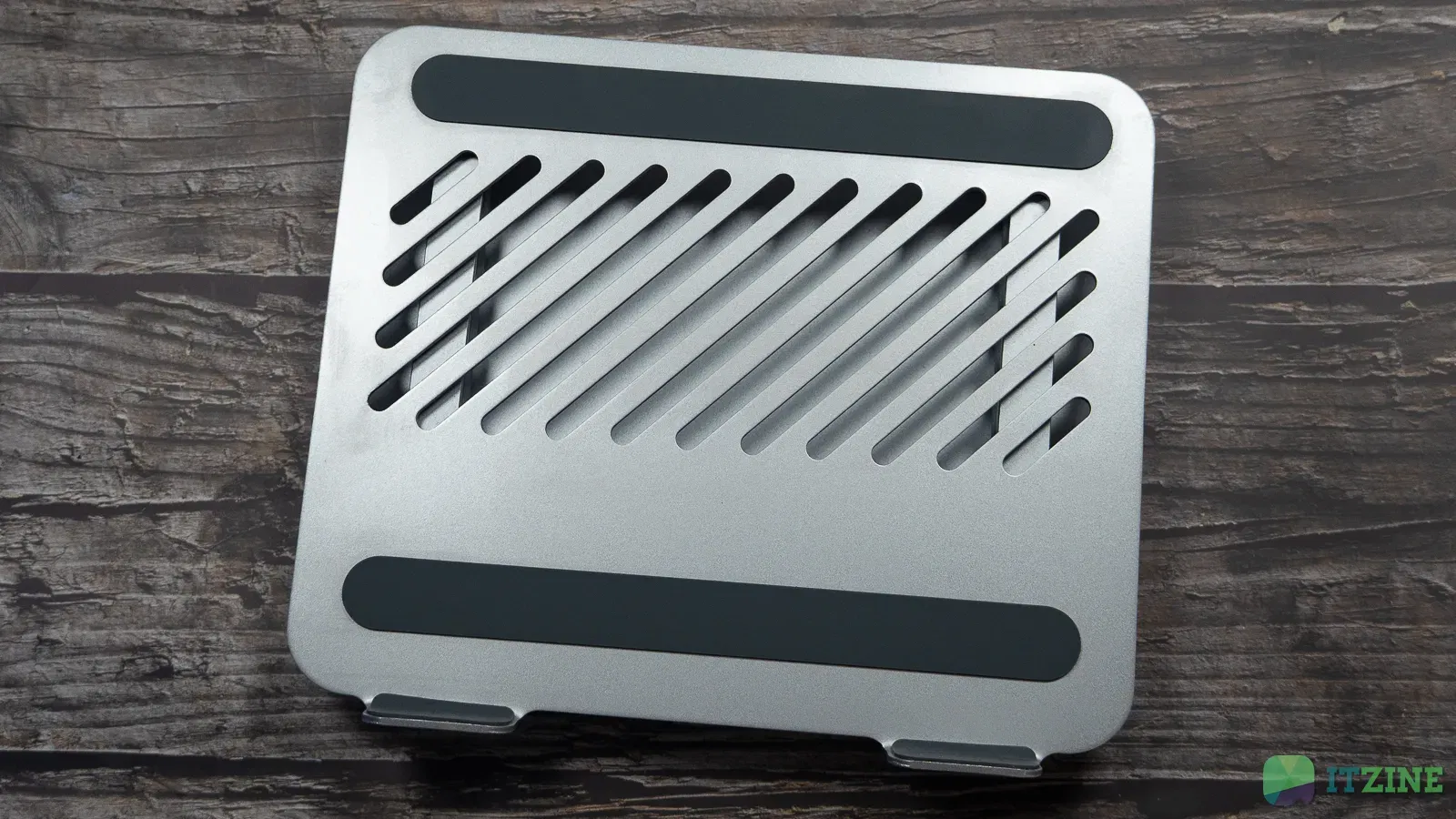
When you pick up the stand, you can feel that it’s not cheap chrome plating, but a really high quality alloy – close to the feel of premium laptop cases. There are thin silicone pads in the places of contact with gadgets and at the bottom, which gently hold the device and do not let it slip when tilting. All screws are recessed into the case, and the metal hinges work with almost no play-so much so that it feels like the holders are made of one piece of metal (but they’re not).
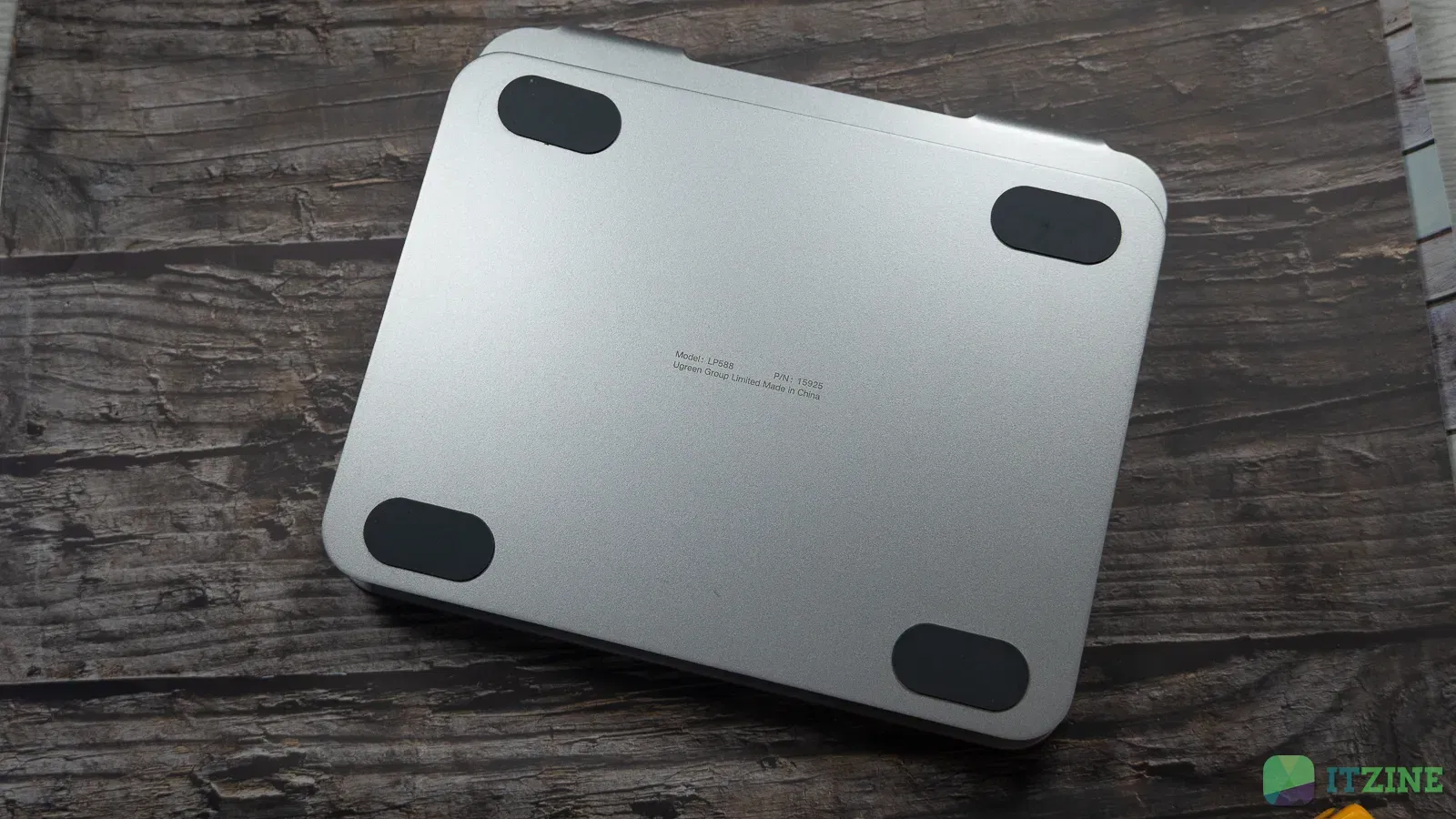

The perforated back panel of the Tablet Stand Holder isn’t just for beauty’s sake: the rows of holes allow airflow to flow freely, so the stand stays cool even after long periods of use. The Rotating Stand also “breathes”: ventilation slits under the platform help dissipate heat from the laptop case to the sides, reducing the load on the built-in coolers and extending the time of comfortable work. I have an iPad in there, though, and it doesn’t get warm.
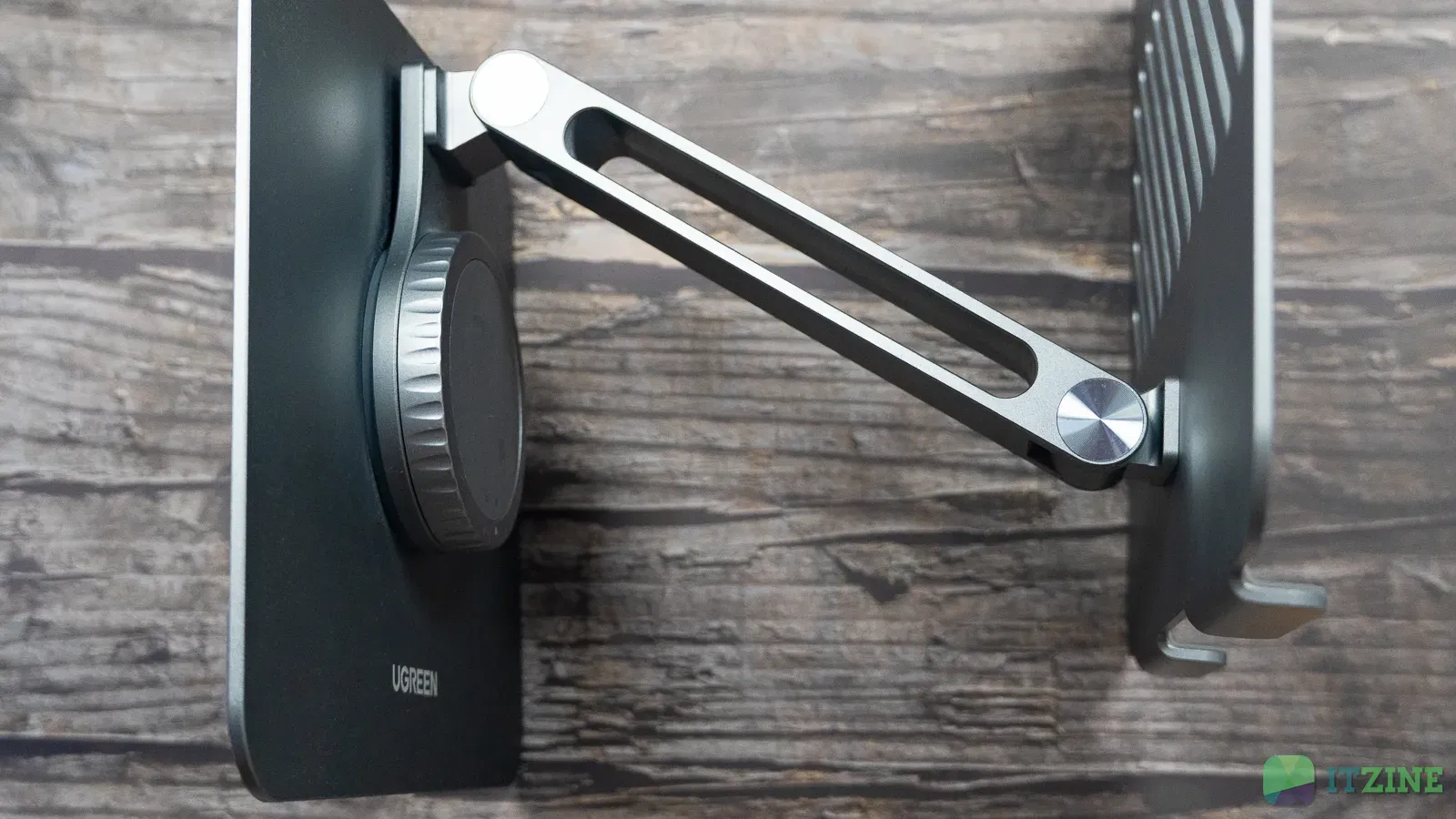
The folding mechanisms of both models deserve their own praise. The Tablet Stand Holder transforms into a flat metal plate about two centimeters thick, while the Rotating Laptop Stand Holder folds into a compact disk. There’s no loss of rigidity in the hinges, no creaks or hint of loosening when folding or unfolding, and the stands still feel sturdy and ready to handle any load.
Ugreen Stand ergonomics and functionality
I quickly found the perfect angle for my laptop on the Tablet Stand Holder. And in such a way that there is still room at the bottom for little things. The panels are tight but not too tight, and even when typing on the laptop keyboard (not on an external keyboard like mine), nothing shakes. The Rotating Stand Holder I have is used for my tablet. It swivels pretty easily, and if you need to lock it, there’s a lock. It has a tiny 1-2 degree backlash, but it’s not critical.
Perhaps the worst joke here is gravity. Unfortunately, it’s impossible to place the tablet perpendicular to the ground. I realize that for the average user it’s not necessary. On the contrary, it is convenient to place it at an angle in front of you for drawing. But if you want to use iPad as a second monitor for MacBook, you want them to be parallel to each other. Alas, since there are no mounts for devices, except for rubber spacers, the tablet tries to fall down when placed perpendicularly on any stand. So far I’ve solved it with a slight tilt, but I’m thinking of fixing it with clamps, because the stands have holes and it can be done quite easily.
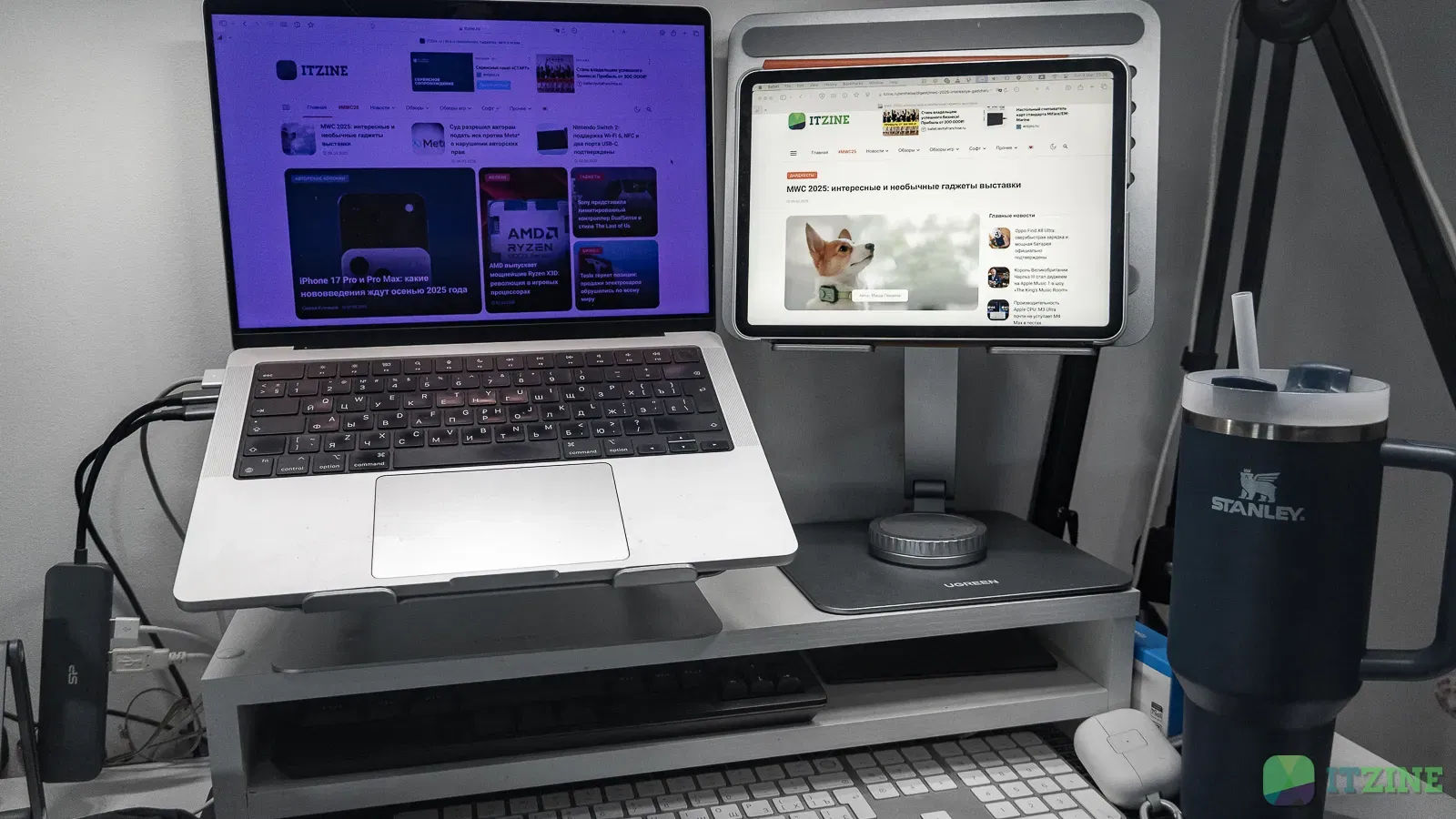
An undeniable advantage of both models is the smoothness of the transition between work scenarios. If you’re typing on your MacBook in the morning and switching to your iPad for photo processing in the afternoon, it’s just one motion to fold the Rotating Stand and unfold the Tablet Stand. The stands fold up compactly and fit easily into a backpack.
Ugreen Stand Experience
When I first put my MacBook Pro 14 on the Tablet Stand Holder, I felt like I was in the cockpit: the screen was exactly at eye level, my neck relaxed, and I forgot about my slouch. And after placing the tablet on the Rotating Stand I felt myself in the flight control center, as all the necessary widgets and dashboards immediately went to the second screen, and on the first screen it became possible to focus on the current important tasks. I almost never take my laptop off my seat (except when I have to go on a business trip or work from a cafe). But the tablet with a rotating stand periodically moves to the living room to watch a movie there, draw in ProCreate or whatever. Quite handy and quick, it has to be said.
When I’m working on an article, I type on my MacBook’s main screen, but on my tablet, I see picture cards, links, and references to sources right away. If I need to check a statistic or a colleague’s edits, my iPad instantly rotates to the right angle so I can see everything at eye level. And both stands hold the devices as if they’re embedded in the desk: not a millimeter of shake, even when I’m using the iPad hot with a stylus. The virtual desktop stretches across two physical screens: the Mac for my main work, the iPad for supporting content and communications. I read the news feed on the iPad in the morning while answering emails on the MacBook, and switch to code or layout in the afternoon. This division of tasks saves a lot of time, so I don’t have to constantly minimize windows and look for the right tab.
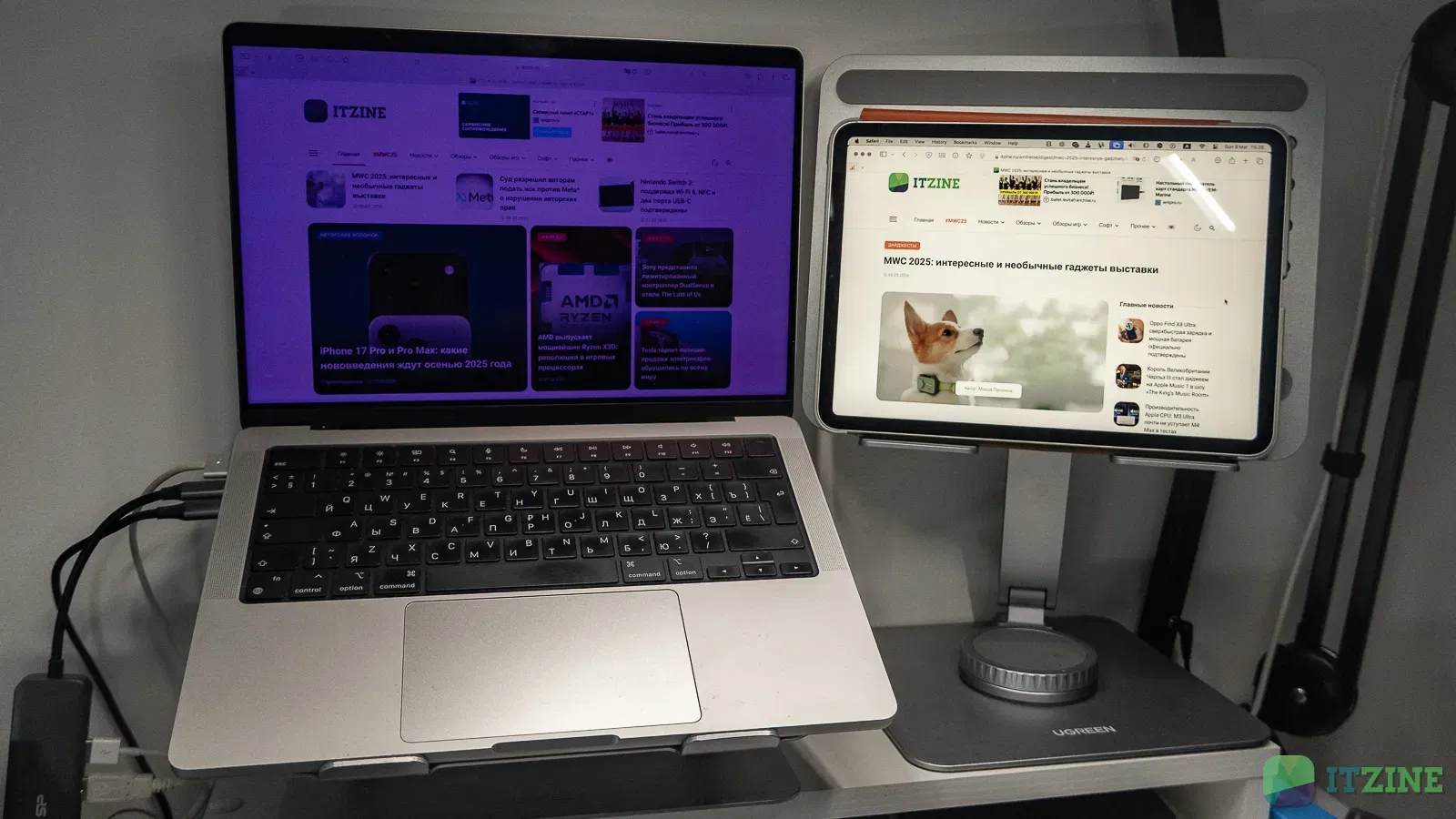
After a couple months of use, I decided to raise the stands above the desk some more and installed a wooden shelf. Now everything fell into place perfectly. I now have a place to store my keyboard, mouse, and other things to quickly clear my desktop for other tasks. And by lowering the stands a bit, they were back at my eye level. And while at first I thought the stand was only needed for the laptop to raise the screen and use the external keyboard, I’m now convinced that it’s the two stands that are needed, of course. But again, it depends on your usage scenario. Either way, now you know how you can make your workspace a little more comfortable.

